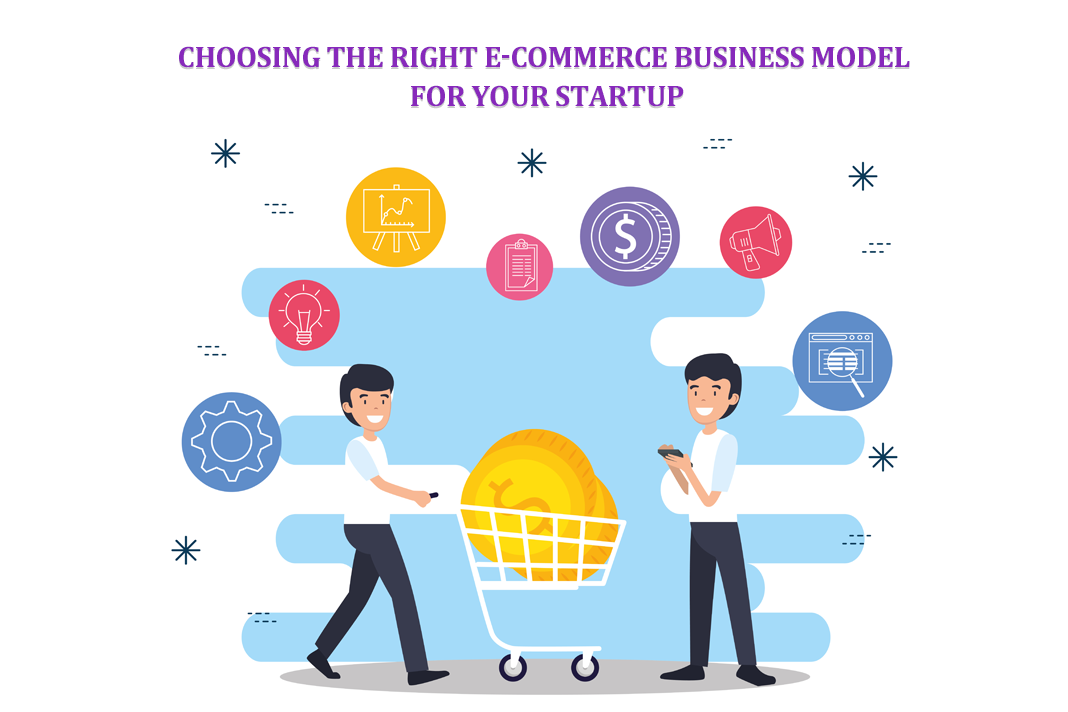Introduction
So you’re starting an e-commerce business. The most important thing to plan is your business model. Choosing the wrong e-commerce business model can leave your entrepreneurial dreams stranded.
The e-commerce landscape has many different types of business models, including the marketplace model, Direct-to-Consumer (D2C), and the dropshipping model, among others. So, there’s a model ideally suited for your unique venture, but picking the wrong one can be costly, time-consuming, and ultimately, detrimental.
This article will explore the different business models in detail, equip you with tools to match your needs with the right approach, and offer valuable insights from experts and successful startups. By the end, you’ll be well-equipped to choose the model that fuels your entrepreneurial journey, not hinder it. Now, let’s begin!
Importance of Choosing the Right Model
Why is choosing the right model so crucial? It’s the invisible engine driving your business. Your model impacts everything from operational costs and marketing strategies to customer relationships and growth potential. Selecting the wrong one can saddle you with high inventory burdens, limit your audience reach, or restrict your ability to scale. Choosing wisely, however, unlocks a smooth course to success, maximizing your resources and propelling your venture towards its desired orbit.
Understanding Your Starting Point
Before starting your e-commerce journey, you must perform a small self-assessment. It forms the foundation for choosing a suitable business model. You need to ask yourself the following key questions:
Your Offering
What are you selling? You need to describe your product or service briefly. Is it a handcrafted artisanal product, a tech-driven solution, or something unique?
What makes your offering shine? For this, identify your Unique Selling Proposition (USP). What sets you apart from the competition? Is it superior quality, sustainable practices, personalized service, or an innovative feature?
Knowing Your Customers
Who is your ideal customer? You can create a detailed profile, including age, demographics, interests, online behavior, and pain points. Understanding their needs, desires, and buying habits is essential for tailoring your model.
Where do they roam? You must identify the platforms and channels where your target audience spends their time online. Are they active on social media, shopping through marketplaces, or frequenting specific websites?
Assessing Your Resources
Analyze your resources like financial investment, inventory capacity, manpower, and team expertise. Identify areas where you might need external support, such as marketing, logistics, or website development. Partnering with freelancers or agencies can fill these gaps.
Charting Your Trajectory
What’s your long-term vision? Do you aim for a niche market and personalized connections, or do you dream of mass appeal and rapid expansion? Your aspirations will influence the scalability and reach of your chosen model.
Are you a slow and steady burner or a shooting star? Do you prefer organic growth through content marketing and community building, or are you aiming for explosive growth through paid advertising and influencer partnerships? Your growth strategy will impact your marketing and operational needs.
You’ll gain valuable insights into your starting point by clearly answering these questions. This self-assessment will guide you towards the e-commerce business model that aligns perfectly with your unique offerings, target audience, resources, and long-term goals.
Exploring Different E-Commerce Business Models
You’ve prepared your business’s starting point. Now, let’s focus on the e-commerce business model that propels you towards success. In this section, we’ll discuss the strengths and weaknesses of different e-commerce models to identify the perfect fit for your business.
Direct-to-Consumer (DTC)
This e-commerce model is often preferred as it allows you to dictate your story and shape brand identity, messaging, and customer experience. This model lets you bypass middlemen, translating to higher profit margins. The direct customer relationships provide valuable insights for growth, and you’ll be able to build deeper connections, fostering loyalty and advocacy.
However, this model requires you to build brand awareness and attract customers yourself, meaning you’ll have to make a significant effort. Online business owners can use the WooCommerce Banner for this purpose. You’ll also manage inventory by yourself, which can be complex. Moreover, providing excellent customer support demands dedicated resources.
Marketplace Model
This e-commerce business model has lower upfront costs as you can leverage existing infrastructure and the audience of established platforms like Amazon or Etsy. The pre-existing customer base reduces initial outreach efforts. The simplified setup process streamlines your entry into the market. So, product listing will be easier to accomplish.
Some cons of this model include:
- Less Control: Branding, pricing, and customer experience might be subject to platform regulations.
- Competition on Fees: Platform fees can eat into your profit margins.
- Limited Customer Relationships: Direct interaction with customers may be restricted.
Dropshipping Model
The dropshipping model has a low inventory risk, meaning there’s no upfront investment in holding stock, minimizing financial burden. It’s scalable, so you can quickly expand your product range without managing physical inventory. You can also offer a diverse selection without limitations of storage space.
In this model, profit margins are typically lower as you rely on supplier markups. You’ll also have limited control over quality and shipping, as the dependence on suppliers can impact product quality and delivery timelines. This directly affects your brand reputation, too.
Subscription Model
This e-commerce business model involves recurring revenue and a predictable income stream, leading to financial stability and growth. It increases customer loyalty, creating ongoing engagement and incentivizing repeat business. Moreover, the subscription model encourages innovation and continuous improvement to retain subscribers.
However, it requires ongoing value creation, which is crucial to prevent customer churn. You need to manage this effectively, addressing cancellation reasons. Also, fulfilling recurring deliveries requires efficient logistics planning, which can be quite complex.
Wholesale Model
The fifth type of e-commerce business model we’ll discuss is the wholesale model. In this model, business owners can leverage retailers’ networks to reach a wider audience quickly, bringing about faster growth. Less customer service is required as retailers handle customer interactions. Also, there is a potential for lower production costs due to larger order volumes.
Cons of this model include the lower margins as retailers share profits. As retailers will be handling the marketing and promotion side of the business, success will also depend on them. Furthermore, you’ll have limited brand control because the retailers will influence branding and customer experience.
Hybrid Model
A hybrid model has the following strengths:
- Combines Benefits of Different Models: Cater to diverse customer needs and market segments.
- Increased Flexibility: Adapts to changing market conditions and customer preferences.
- Reduced Dependence on Single Channel: Mitigates risks associated with over-reliance on one model.
Here are some weaknesses of this model:
- Requires Complex Management: Navigating multiple models and ensuring operational cohesion is challenging.
- Potential Conflicts Between Models: Different models might have conflicting requirements or strategies.
- Increased Complexity: Requires a deeper understanding of various e-commerce aspects.
Keep in mind that the ideal model isn’t a one-size-fits-all solution. You must carefully consider your starting point, target audience, resources, and growth aspirations.
Conclusion
In this article, we’ve talked about the diverse e-commerce business models available for your startup. Armed with the knowledge you’ve gained, it’s time to choose the model that propels you towards success.
Don’t rush the decision. Reflect on your self-assessment, revisit the strengths and weaknesses of each model, and seek guidance from mentors and experts. The optimal choice rests in aligning your unique offerings, target audience, resources, and aspirations with the model’s characteristics. Remember to be adaptable and embrace change. As your business evolves, your chosen model might need adjustments. Stay informed about industry trends, analyze your performance








Thanks for sharing. I read many of your blog posts, cool, your blog is very good.